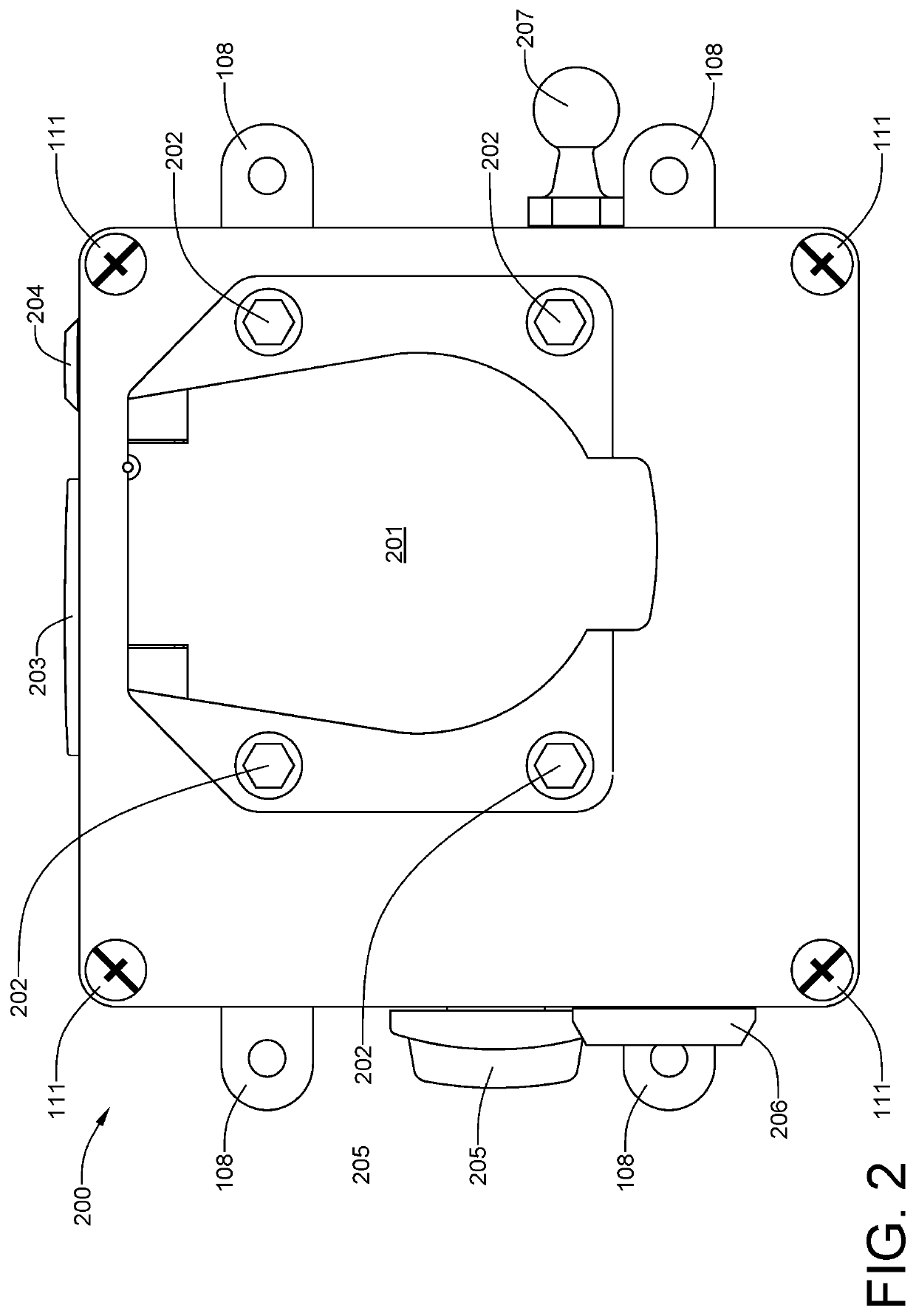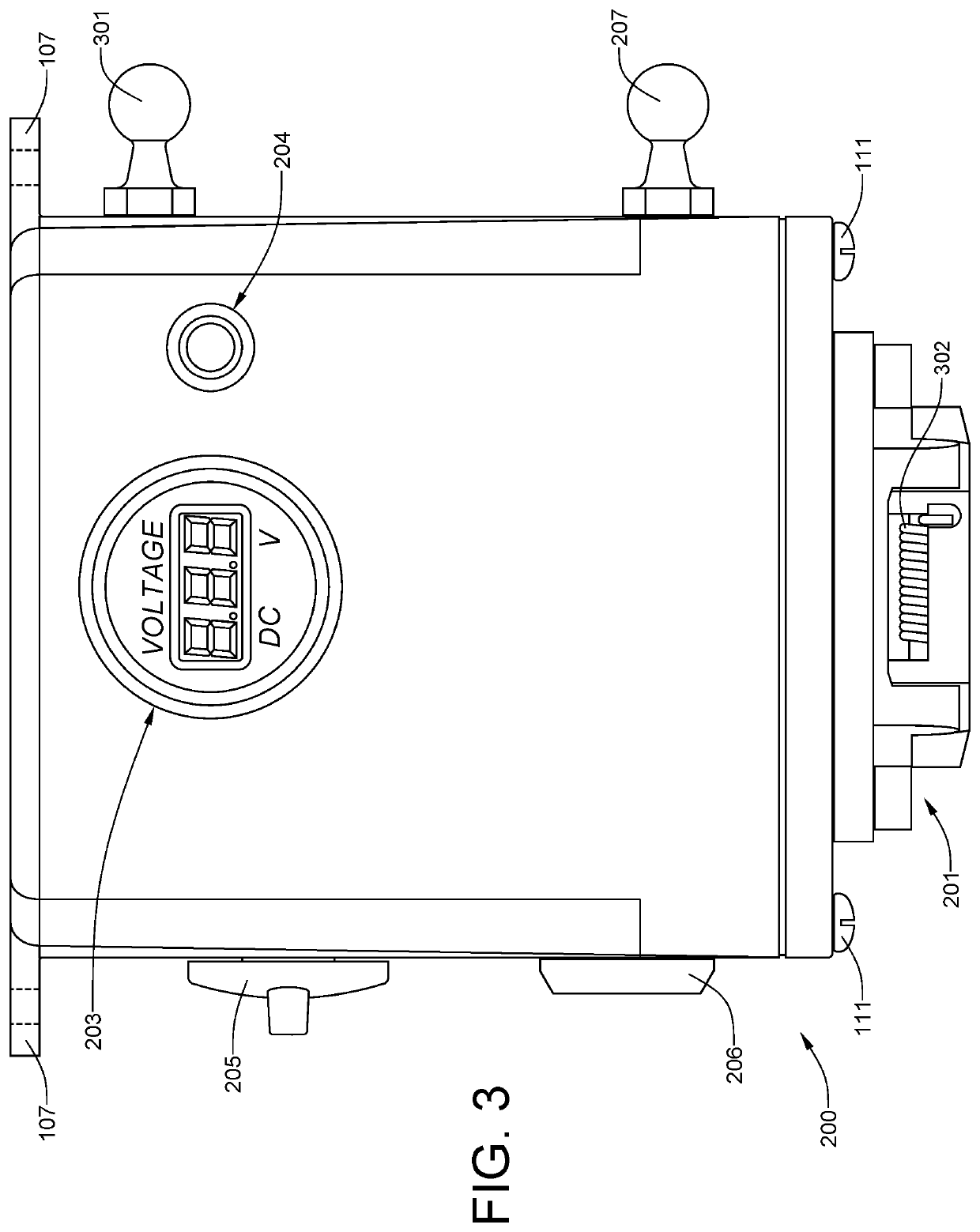Parasitic emulator for testing lighting and electric brake circuits on travel and fifth-wheel trailers
a technology of circuits and emulators, applied in the direction of coupling device connections, instruments, measurement instrument housings, etc., to achieve the effects of minimizing weight and cost of testing devices, sufficient storage power, and extended battery operation
- Summary
- Abstract
- Description
- Claims
- Application Information
AI Technical Summary
Benefits of technology
Problems solved by technology
Method used
Image
Examples
Embodiment Construction
[0020]The parasitic emulator will now be described with reference to the attached drawing figures. It should be understood that the drawings are intended to be merely illustrative of the invention, and that the invention is to be defined, primarily, by the circuit schematic diagram of FIG. 6 and the attached claims, rather than by the physical appearance of the housing. The emulator is considered to be parasitic because it lacks its own power supply and must rely on an external power source. When testing the electrical circuits of trailers equipped with an on-board battery, the emulator uses the trailer battery to effectuate the testing process. The device is considered an emulator because it emulates the electrical functions of a towing vehicle in the testing of trailer electrical circuits.
[0021]Referring now to FIG. 1, an invention prototype has been constructed using a Carlon® 4″×4″×4″ (10 cm×10 cm×10 cm) water-tight junction box 100 as a device housing. Although the size, shape ...
PUM
 Login to View More
Login to View More Abstract
Description
Claims
Application Information
 Login to View More
Login to View More - R&D
- Intellectual Property
- Life Sciences
- Materials
- Tech Scout
- Unparalleled Data Quality
- Higher Quality Content
- 60% Fewer Hallucinations
Browse by: Latest US Patents, China's latest patents, Technical Efficacy Thesaurus, Application Domain, Technology Topic, Popular Technical Reports.
© 2025 PatSnap. All rights reserved.Legal|Privacy policy|Modern Slavery Act Transparency Statement|Sitemap|About US| Contact US: help@patsnap.com



